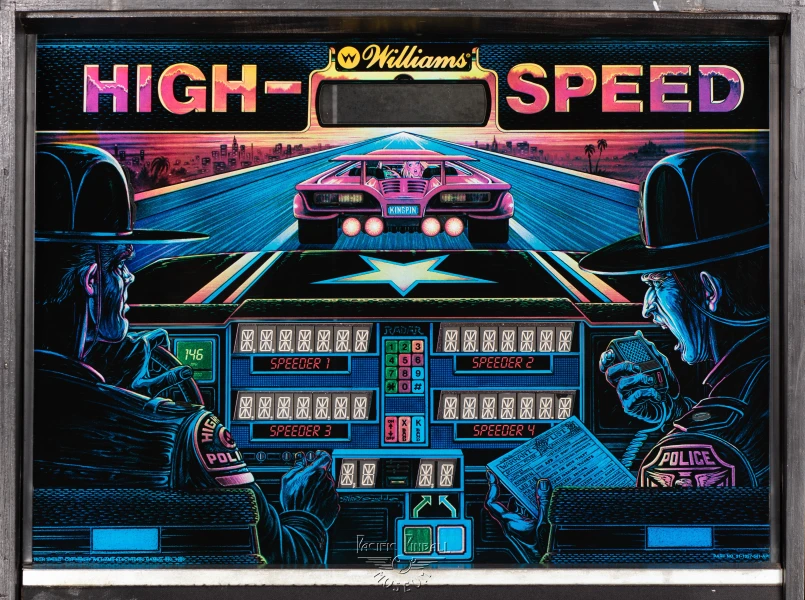High Speed
High Speed Preview Image

Machine Details
Manufacturer
n/a
Year
n/a
Technology Era
n/a
Machine Description
Content Under Review
Help us improve this content
Your support accelerates our content verification efforts.
Support Our WorkHigh Speed, released by Williams Electronics in 1986, marked a significant milestone in pinball history as it introduced several revolutionary features that would influence pinball design for decades to come. Designed by Steve Ritchie, the game was inspired by his real-life experience of being pursued by police in a high-speed chase, bringing an unprecedented level of personal narrative to pinball design.
The machine's innovative features included the first-ever 'Combination Shot,' which required players to hit specific sequences of shots to progress through the game's story. It also introduced the 'Williams Checkpoint' feature, where players needed to hit targets in sequence to advance through various 'speed' levels. The gameplay centered around a police chase theme, complete with police lights, sirens, and a unique 'pursuit mode' that created an intense, atmospheric experience.
High Speed proved to be a massive commercial success for Williams, with over 17,080 units produced. Its popularity demonstrated that players connected strongly with narrative-driven gameplay, paving the way for future story-based pinball machines. The game's risk/reward mechanics, particularly in the pursuit sequence, created a new standard for pinball tension and excitement.
The legacy of High Speed cannot be overstated, as it influenced countless subsequent pinball designs and established Steve Ritchie as one of the industry's most innovative designers. The game's success led to a sequel, 'The Getaway: High Speed II' in 1992, and its influence can be seen in numerous modern pinball machines that incorporate chase themes and progressive gameplay elements.